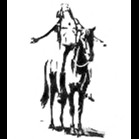Pigs
-
Recently Browsing 0 members
- No registered users viewing this page.
-
Topics
-
-
Popular Contributors
-
-
Latest posts...
-
33
Report Urgent Call for Border Safety: Seven Thai Provinces on High Alert
That has nil to do with uniforms as a topic I raised? -
30
Krungsri online banking discontinued from 1 October 2025
I have just this very minute called the bank and they confirmed they are cancelling Internet Banking but the App WILL CONTINUE TO WORK. So no sweat. Basically things stay as normal for me and most other people. -
254
Fun Quiz > Covid-19 mRNA Vax harm denial - At which stage are you?
Kevin Mccairn's article that reports this case, is cautious - as every scientific publication should - in how it formulates its findings and conclusions. > https://kevinwmccairnphd282302.substack.com/p/amyloidogenic-fibrils-in-a-post-gestational 7. Conclusion This case represents a sentinel event that underscores the need for systematic, high-resolution evaluation of post-vaccine biology—especially in pediatric and developmental contexts that have the shadow of events being precipitated by biowarfare research. The persistence of amyloidogenic fibrils years after gestational exposure cannot be dismissed by outdated pharmacokinetic assumptions. Only rigorous post-market surveillance, independent replication, and transparent access to proprietary vaccine data can resolve these urgent questions, especially and until the threat from synthetic, biowarfare spawned amyloids/PRIONS has been contained. > Imo the conclusion can rightfully be described as a 'smoking gun'. -
149
Revenue Department to amend tax on foreign income remittance
It is not a joke! It is a scaremongering troll! -
8
-
30
Krungsri online banking discontinued from 1 October 2025
Install Bluestacks Android Emulator on your PC, then you can put all your phone banking apps onto that. Big screen and mouse.
-
-
Popular in The Pub






.thumb.jpeg.d2d19a66404642fd9ff62d6262fd153e.jpeg)






Recommended Posts
Create an account or sign in to comment
You need to be a member in order to leave a comment
Create an account
Sign up for a new account in our community. It's easy!
Register a new accountSign in
Already have an account? Sign in here.
Sign In Now